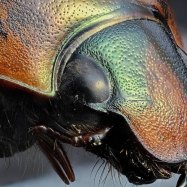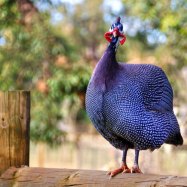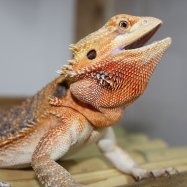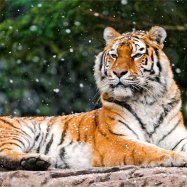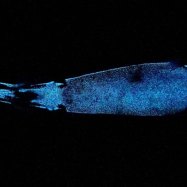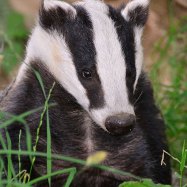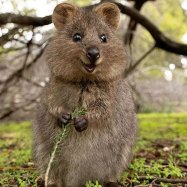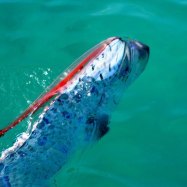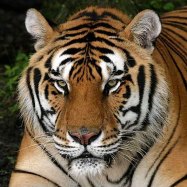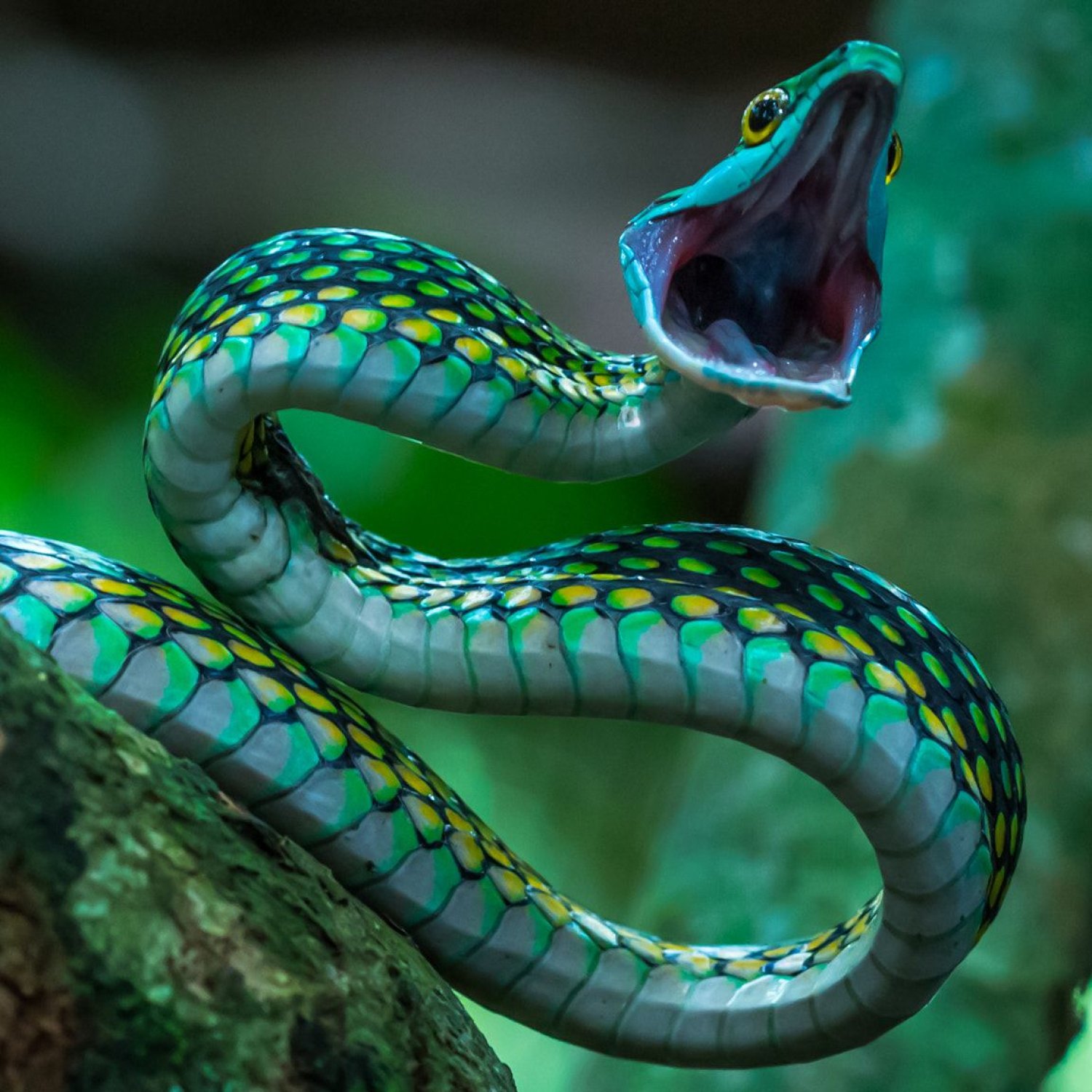
Parrot Snake
2 to 6 feet
The Parrot Snake, belonging to the Colubridae family, is a slender and elongated creature found in trees. Ranging from 2 to 6 feet in length, these snakes are known for their vibrant colors and unique patterns. They are commonly found in the Amazon rainforest, making them an important part of its ecosystem. However, beware of their bite as it can be venomous. #ParrotSnake #AmazonRainforest #Colubridae #Wildlife
Animal Details Summary:
Common Name: Parrot Snake
Kingdom: Animalia
Habitat: Tropical rainforests, deciduous forests, mangroves, plantations
The Parrot Snake: A Stunning Reptile of the Rainforest
When you think of a parrot, you probably imagine a vibrant and talkative bird perched on a shoulder or in a cage. But did you know that there is also a parrot of the serpent world? Meet the parrot snake, a stunning and elusive reptile that inhabits the tropical rainforests of Central and South America.Scientifically known as Leptophis ahaetulla, the parrot snake belongs to the Kingdom Animalia and the Phylum Chordata. It is a member of the Class Reptilia and the Order Squamata, making it a distant relative of other scaly creatures like lizards and crocodiles Parrot Snake. However, its closest relatives are other snakes in the family Colubridae.
The common name, "parrot snake," is derived from the reptile's striking resemblance to a parrot due to its bright green, yellow, and black coloration. This unique color combination makes the parrot snake a highly sought-after species in the illegal pet trade, posing a significant threat to its survival. But more on that later; let's first get to know this mesmerizing creature a little better.
Habitat and Geographical Distribution
The parrot snake calls the lush tropical rainforests of Central and South America its home. It can also be found in deciduous forests, mangroves, and even plantations. This widespread distribution of habitat makes it adaptable to various environments, making it a successful and thriving species.These slithering creatures are found in countries like Mexico, Costa Rica, Ecuador, Colombia, Venezuela, and Brazil, to name a few. However, their exact range is challenging to determine as they are elusive creatures that often reside high up in trees, making it difficult for researchers to study and track them Peekapoo.
Feeding Method and Diet
As carnivorous creatures, the primary source of food for parrot snakes is other animals. They have sharp teeth, which they use to grab and devour their prey, typically small rodents, birds, and lizards. Like most snakes, the parrot snake is an ambush predator and relies on its excellent camouflage and quick strike to catch its next meal.Interestingly, parrot snakes are also known to prey on other snakes, including venomous ones like coral snakes. They are immune to the venom of these snakes, making them fearless predators in the rainforest ecosystem.
Tree-Dwelling Reptiles
One of the most distinctive features of the parrot snake is its preference for living in trees. They are highly arboreal reptiles, meaning they spend most of their lives in the canopy of the rainforest's trees. This unique adaptation allows them to stay hidden from potential predators on the forest floor and also gives them easy access to their prey.The slender and elongated body shape of parrot snakes is ideal for life in the trees. It allows them to move gracefully and swiftly across branches while remaining hidden from view. Their bodies are also relatively small, ranging from 2 to 6 feet in length, making them agile and perfect for navigating their arboreal habitat.
Threats to Survival
Despite being a widespread and adaptable species, the parrot snake is facing multiple threats to its survival. One of the most significant dangers comes from habitat loss due to deforestation. As human populations continue to expand and encroach upon the rainforest, the parrot snake's natural habitat is being destroyed at an alarming rate.Another major threat is the illegal pet trade, where these stunning reptiles are captured and sold as exotic pets. This not only disrupts their natural populations but also poses a risk to the individuals who try to catch and transport them. The stress of captivity and improper care also makes them prone to disease and early death.
Sadly, human persecution is another factor that threatens the survival of the parrot snake. Due to their striking appearance and resemblance to parrots, they are often mistaken for venomous snakes and killed out of fear. This senseless killing further contributes to the decline of their populations.
Conservation Efforts
Fortunately, there are ongoing efforts to protect and conserve the parrot snake and its rainforest habitat. Organizations like Rainforest Trust and World Wildlife Fund are working towards preserving and restoring critical rainforest areas, thereby safeguarding the parrot snake's home.Moreover, laws and regulations are in place to protect against the illegal pet trade and human persecution of these reptiles. Awareness and education about the importance of preserving biodiversity in the rainforest are also being promoted to ensure the continued survival of the parrot snake and its fellow species.
In Conclusion
In conclusion, the parrot snake is a fascinating and beautiful reptile that deserves our attention and protection. Their unique coloration and arboreal lifestyle make them a truly remarkable creature in the rainforest ecosystem. However, the threats they face are severe and require immediate action to ensure their survival.As humans, it is our responsibility to protect and preserve the natural world and its diverse inhabitants. We must continue to support conservation efforts and spread awareness about the importance of preserving biodiversity. Only then can we ensure that future generations get to witness the captivating presence of creatures like the parrot snake in their natural habitats.
Next time you take a walk through the rainforest, keep an eye out for the parrot snake, and remember to appreciate their role in maintaining the delicate balance of life in the lush green forests of Central and South America.

Parrot Snake
Animal Details Parrot Snake - Scientific Name: Leptophis ahaetulla
- Category: Animals P
- Scientific Name: Leptophis ahaetulla
- Common Name: Parrot Snake
- Kingdom: Animalia
- Phylum: Chordata
- Class: Reptilia
- Order: Squamata
- Family: Colubridae
- Habitat: Tropical rainforests, deciduous forests, mangroves, plantations
- Feeding Method: Carnivorous
- Geographical Distribution: Central and South America
- Country of Origin: Various countries in Central and South America
- Location: Trees
- Animal Coloration: Bright green, yellow, and black
- Body Shape: Slender and elongated
- Length: 2 to 6 feet
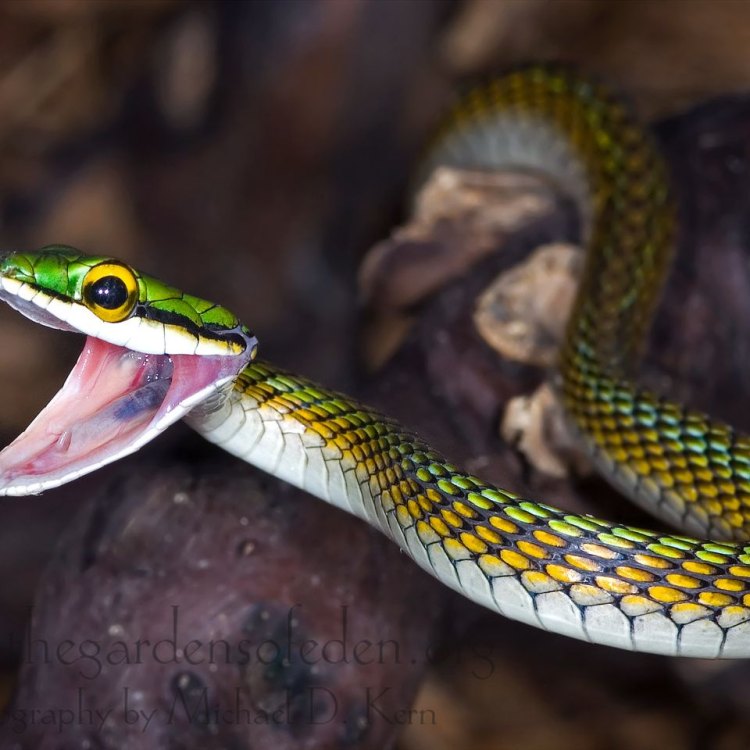
Parrot Snake
- Adult Size: 5 to 6 feet
- Average Lifespan: 10 to 15 years
- Reproduction: Oviparous
- Reproductive Behavior: Mating occurs in trees
- Sound or Call: Produce a hissing sound
- Migration Pattern: Non-migratory
- Social Groups: Solitary
- Behavior: Arboreal, diurnal
- Threats: Habitat loss, illegal pet trade
- Conservation Status: Least Concern
- Impact on Ecosystem: Help control populations of small rodents
- Human Use: Not commonly used by humans
- Distinctive Features: Long and slender body, large eyes
- Interesting Facts: Parrot snakes have specialized teeth at the rear of their jaws that allow them to swallow prey whole
- Predator: Birds of prey, larger snakes
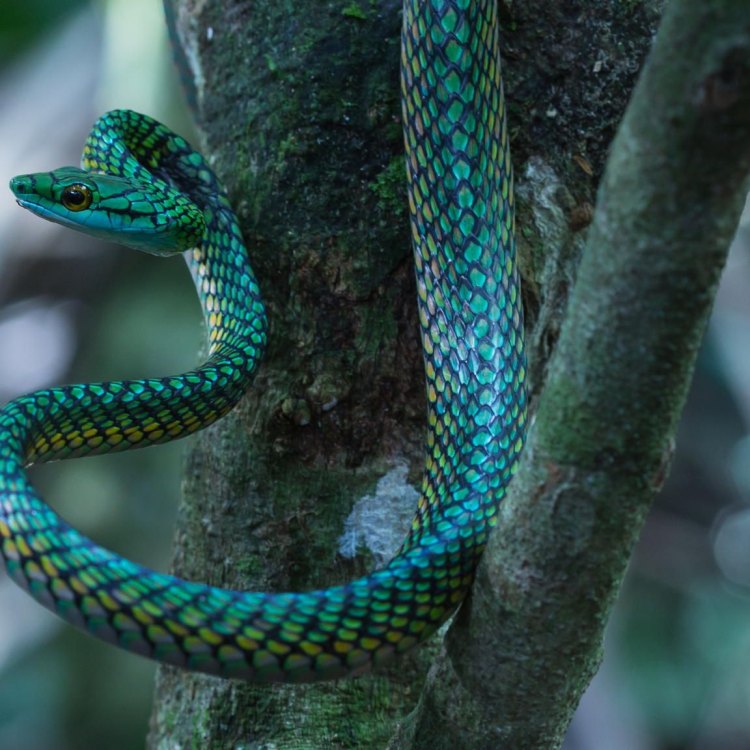
Leptophis ahaetulla
The Fascinating Parrot Snake: A Hidden Gem of the Animal Kingdom
Nestled deep in the rainforests of Central and South America, the parrot snake is a hidden gem of the animal kingdom. Often overshadowed by its more well-known and flashy snake counterparts, the parrot snake boasts unique features and behaviors that make it a truly fascinating creature. From its arboreal lifestyle to its specialized reproductive habits, the parrot snake is a species that deserves to be in the spotlight.Size and Lifespan
The parrot snake, also known as the macaw snake or bird snake, is a medium-sized snake that typically grows to be around 5 to 6 feet in length PeaceOfAnimals.Com. While this may not seem large in comparison to other snake species, the parrot snake's slender body and long tail give it a striking appearance. Its long and slender body serves as both a defensive and predatory mechanism, allowing it to maneuver gracefully through the dense rainforest foliage and strike with precision at prey.
In captivity, these stunning snakes can live up to 15 years, while their lifespan in the wild is slightly shorter, averaging around 10 years. With proper care and husbandry, these snakes can make great pets for those looking for a unique and low-maintenance reptile companion.
Reproduction and Mating Behavior
Like most snakes, the parrot snake is oviparous, meaning they lay eggs rather than giving birth to live young. However, their reproductive behavior sets them apart from other snake species. Mating for parrot snakes occurs in trees, making it a sight to behold for lucky observers. The male and female snake intertwine their bodies and perform an intricate dance in the treetops, culminating in the female laying her eggs in a nest made of twigs and leaves high up in the trees.
This unique reproductive behavior allows the parrot snake to avoid potential predators and increases the survival rate of their young Pine Beetle. It also serves as a way for the male to showcase his strength and agility, impressing potential mates.
Sound and Communication
While snakes are not typically known for their vocal abilities, the parrot snake is an exception to the rule. These snakes produce a hissing sound that is believed to be used for communication and warning. This hissing sound can be heard when the snake feels threatened or agitated, serving as an audible warning to potential predators or other snakes.
Migration and Social Behavior
Parrot snakes are generally solitary creatures, preferring to spend their time alone in the treetops. Unlike some snake species that exhibit migration patterns, parrot snakes are non-migratory and tend to stay in the same territory year-round. However, they do occasionally come together to mate and communicate with one another through their hissing calls.
Behavior and Habitat
One of the most unique characteristics of the parrot snake is its arboreal lifestyle. These snakes spend the majority of their time in the treetops, using their long, slender bodies and sharp claws to climb and maneuver through the dense foliage. This arboreal behavior not only serves as protection from potential predators on the ground but also allows them to hunt for prey from above, such as small birds and rodents.
Parrot snakes are also diurnal, meaning they are most active during the day, another behavior that sets them apart from other snake species. This is likely due to their arboreal lifestyle, as they use the warmth of the sun to regulate their body temperature and energy levels.
Threats and Conservation Status
Despite their unique traits and behaviors, parrot snakes face threats in their natural habitat. Habitat loss due to deforestation and illegal pet trade are the biggest threats to this species. As their native rainforest homes are destroyed, parrot snakes are left with limited space to hunt and breed, leading to a decline in population.
Fortunately, the parrot snake is listed as "least concern" on the International Union for Conservation of Nature's (IUCN) Red List, meaning they are currently not at risk of extinction. However, continued efforts in conservation and responsible pet ownership are crucial in ensuring their survival.
Impact on Ecosystem
Apart from being exquisite creatures, parrot snakes also play a vital role in their ecosystem. These predators help control populations of small rodents and birds in the rainforests, balancing the delicate ecosystem. As apex predators, parrot snakes keep prey populations in check, preventing overgrazing and maintaining the balance of the food chain.
Human Use and Distinctive Features
While snakes have been used by humans for various purposes throughout history, the parrot snake is not commonly used or sought after by humans. Their lack of venom and relatively small size make them undesirable for traditional snake uses, such as medicine, food, or companionship. However, their striking appearance and unique behaviors have made them increasingly popular amongst reptile enthusiasts and collectors.
One of the most distinctive features of the parrot snake is its long and slender body, which is also its most outstanding physical characteristic. These snakes also have large, dark eyes, giving them a piercing and sometimes intimidating gaze. But perhaps their most remarkable feature is their specialized teeth at the rear of their jaws, allowing them to swallow prey whole. This adaptation allows them to consume prey much larger than their own head, making them formidable predators.
Predators and Prey
While parrot snakes are skilled hunters, they are not immune to predators themselves. Birds of prey, such as eagles and hawks, are known to prey on these snakes, picking them off from the treetops. Larger snake species, such as boa constrictors and anacondas, may also pose a threat to parrot snakes.
Their diet mainly consists of small rodents and birds, making them an important link in the food chain. These snakes use their slender bodies and sharp teeth to catch and swallow their prey, often hanging from trees to ambush unsuspecting victims.
Fascinating Facts
Parrot snakes have captured the attention and imagination of humans for centuries, and it's no surprise when you consider some of the fascinating facts about these creatures. For starters, these snakes can come in a variety of colors and patterns, making it difficult to identify them in the wild. From vibrant greens to earthy browns, parrot snakes possess a color palette that rivals the most skilled artists.
Additionally, parrot snakes have a unique behavior of rubbing their scent glands against branches to mark their territory. This serves as a warning and communication for other nearby snakes, allowing them to avoid conflict and establish dominance in their territory.
In Conclusion
The parrot snake may not be the most well-known or studied snake species, but it is undoubtedly one of the most unique and fascinating creatures in the animal kingdom. From their arboreal lifestyle and reproductive behavior to their specialized teeth and hissing calls, every aspect of this species is remarkable. As with any animal, it's crucial to appreciate and respect the parrot snake and its habitat to ensure its survival and continued role in the delicate ecosystem. So the next time you're wandering through a rainforest, keep an eye out for this hidden gem and witness its beauty and complexity firsthand.
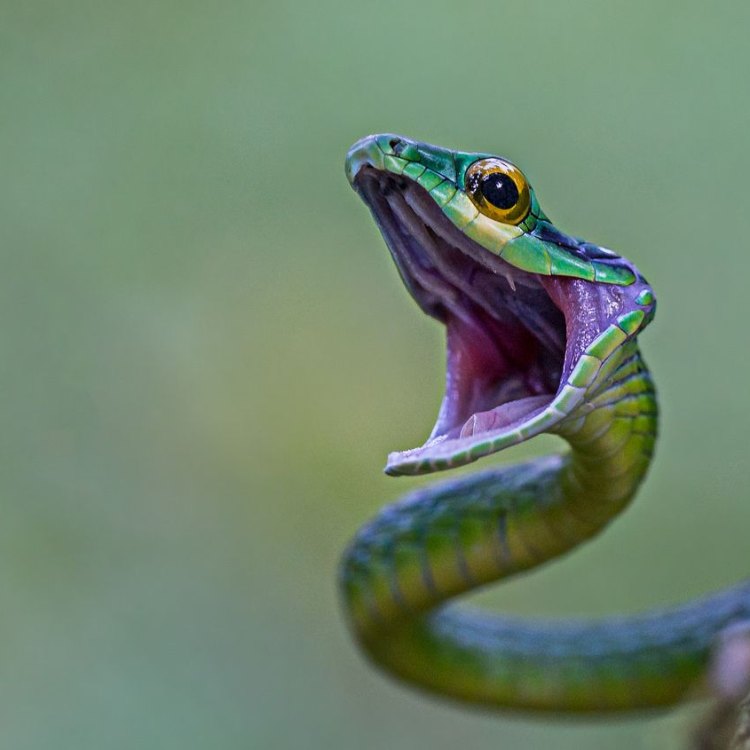
The Parrot Snake: A Stunning Reptile of the Rainforest
Disclaimer: The content provided is for informational purposes only. We cannot guarantee the accuracy of the information on this page 100%. All information provided here may change without prior notice.

